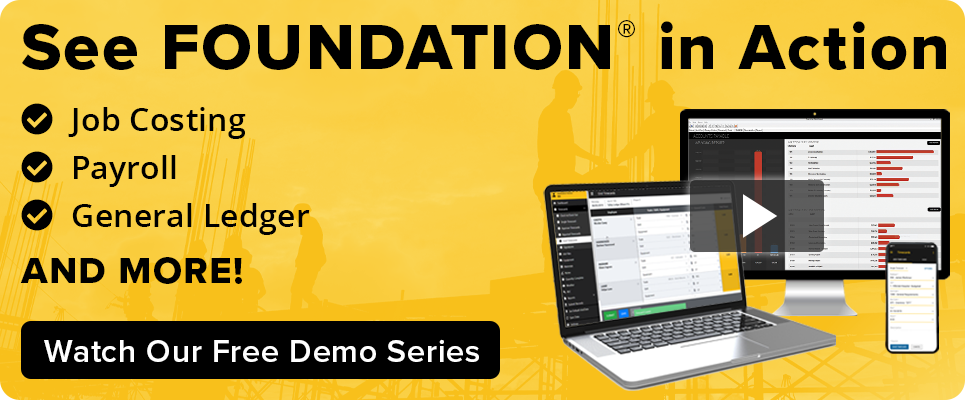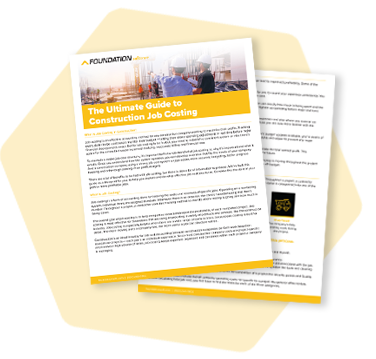

By Bruce Orr, ProNovos
Teaching construction financial management is an unofficial part of the job for C-suite executives at contracting firms — after all, they can’t achieve maximum profitability until their PMs know fundamentals like profit fade and over- and under-billing inside and out.
What’s at stake in getting this right? Just ask Casey Dillon, President and CEO of West Lafayette, Indiana-based Atlas Construction. After finding a better way to educate field personnel about project billing, the 32-year construction veteran improved his company’s cash position by about $1 million.

‘Data Overload’
Dillon’s family-owned excavating firm started using FOUNDATION® construction accounting software back in the 1980s when it was still coded in DOS. Over the decades, Atlas added HCSS HeavyBid, Procore and other construction apps. “We eventually were creating such an abundance of data that we struggled to interpret it all,” Dillon explained. “We probably had 1,000 spreadsheets that we maintained. We were trying to present that data to young managers and field personnel in a way that would be easy for them to digest.”
But some busy field personnel never seem to get any “aha!” moments after staring at rows and columns in Google Sheets or Microsoft Excel.
Dillon also points to shortcomings in the traditional approach to WIP reporting, in which project data is pulled out of the accounting system on a particular day, then combined into the WIP report and finally discussed with PMs days or weeks later. “The WIP is 100% accurate the day it is produced,” the CEO said. “A week or two later, it is not a great indicator.”
‘The Money Graph’
For Atlas Excavating, two related concepts — data warehousing and data visualization — made the difference on PM education.
Earlier this year, the company rolled out a cloud-based analytics platform by a FOUNDATION partner that pulls in accounting and other data from multiple sources and systems (i.e., data warehousing).
Meanwhile, the platform’s data visualization capabilities provide real-time views into areas such as labor hours, sales, billings, change orders, projected final cost and AP/AR.
In the project cash flow analysis dashboard, a simple graph with blue, green and black lines shows the relative positions of cash, costs and billing. Dillon lightheartedly calls this “the money graph” because of the impact it had on his PMs’ understanding.
Like construction CEOs everywhere, he emphasizes being aggressive on billing. However, the actual big-picture effects of particular parts of the equation — like payment lags by specific owners — can be hard for PMs to gauge. Even on a project that seems comfortably over-billed on the 30th of the month, cash could still run behind if the owner takes 60 days to pay.
With the money graph, Dillon’s managers can see at a glance how much they need to bill as well as average lead times for customers. “It’s powerful,” the CEO said. “It really showed our guys why some of these jobs were still negative cash. We reduced our cash position by about $1 million in 45 days.”
Change Order Deep Dive
Charts and graphs of real-time data can also help PMs better understand how fundamentals like profit margin and change orders affect financials.
When Atlas first ran analytics on its change orders earlier this year, the company identified 500 examples or about $5 million in extra work. “We hadn’t taken too many jobs — we just underestimated how much change-order work we were doing, along with how much effort that takes,” Dillon said.
The new dashboard shows Atlas execs and PMs change orders by year, active jobs, active close, approval status and more, with filters for individual project managers. “It allows us to see, right away, if we’re doing change orders to lose money or make money,” Dillon said. “Our PMs are learning where they need to focus.”

Moving the Ball
Dillon was a linebacker in high school and attended college on a football scholarship. Pulling from this experience, he likens trend-analysis to coaches reviewing footage with players right after the game. “You want to shorten the timetable from the actual event to when you learn the lesson, because that makes you less likely to repeat mistakes,” he said.
Good coaches are also direct in ways that help everyone up their performance. “As an organization, we get better if we’re honest with ourselves about where we goofed up and how we can improve,” Dillon said, “and that’s exactly what analytics helps us accomplish.”
Share Article
Keep on current news in the construction industry. Subscribe to free eNews!
Learn about our software more in depth with product overviews, demos, and much more!

Our ACA reporting & e-filing services include official 1094-C and 1095-C IRS reporting, optional e-filing (no applying for a TCC code required), mailing to your employees and experienced support to help you.

There are plenty of reasons to make FOUNDATION your choice for job cost accounting and construction management software — just ask our clients!

From job cost accounting software, to construction-specific payroll. Get an overview on your next all-in-one back-office solution.


